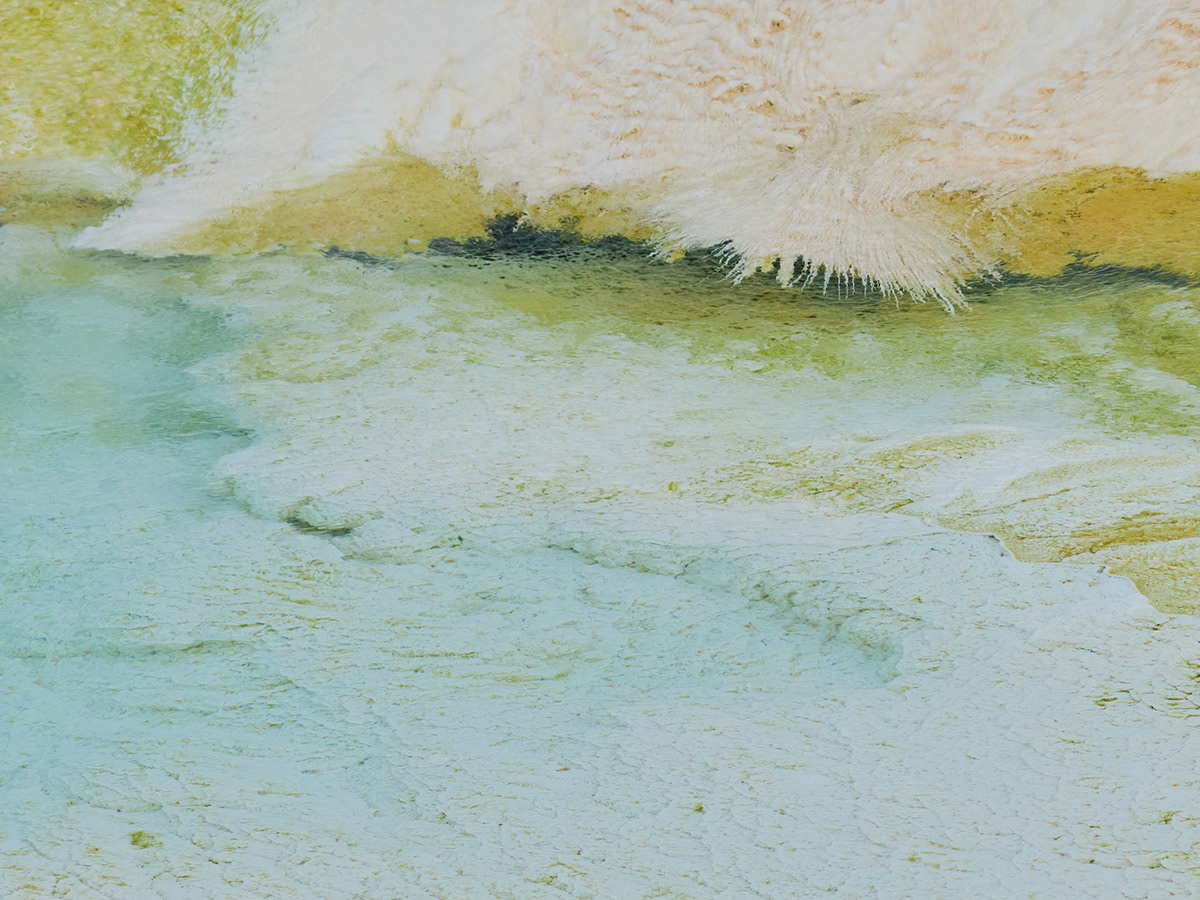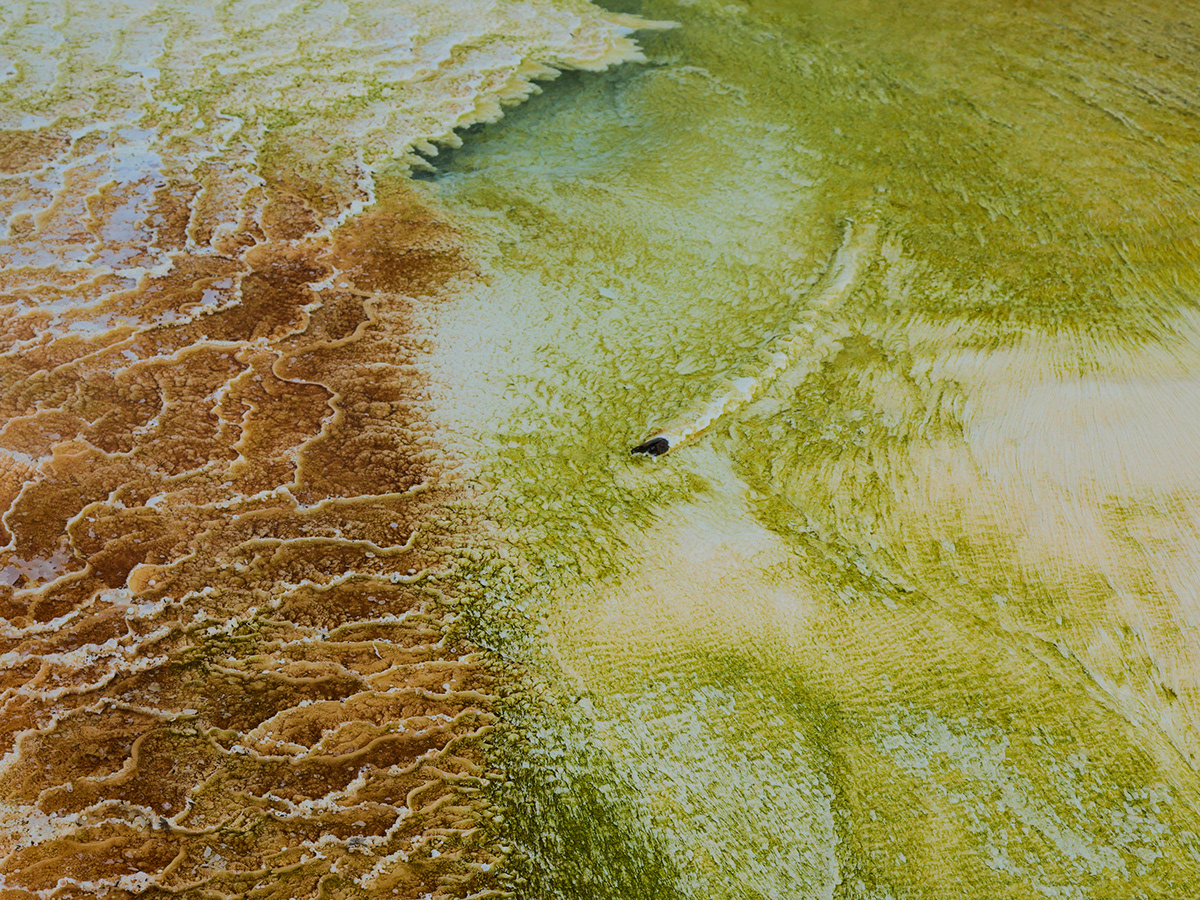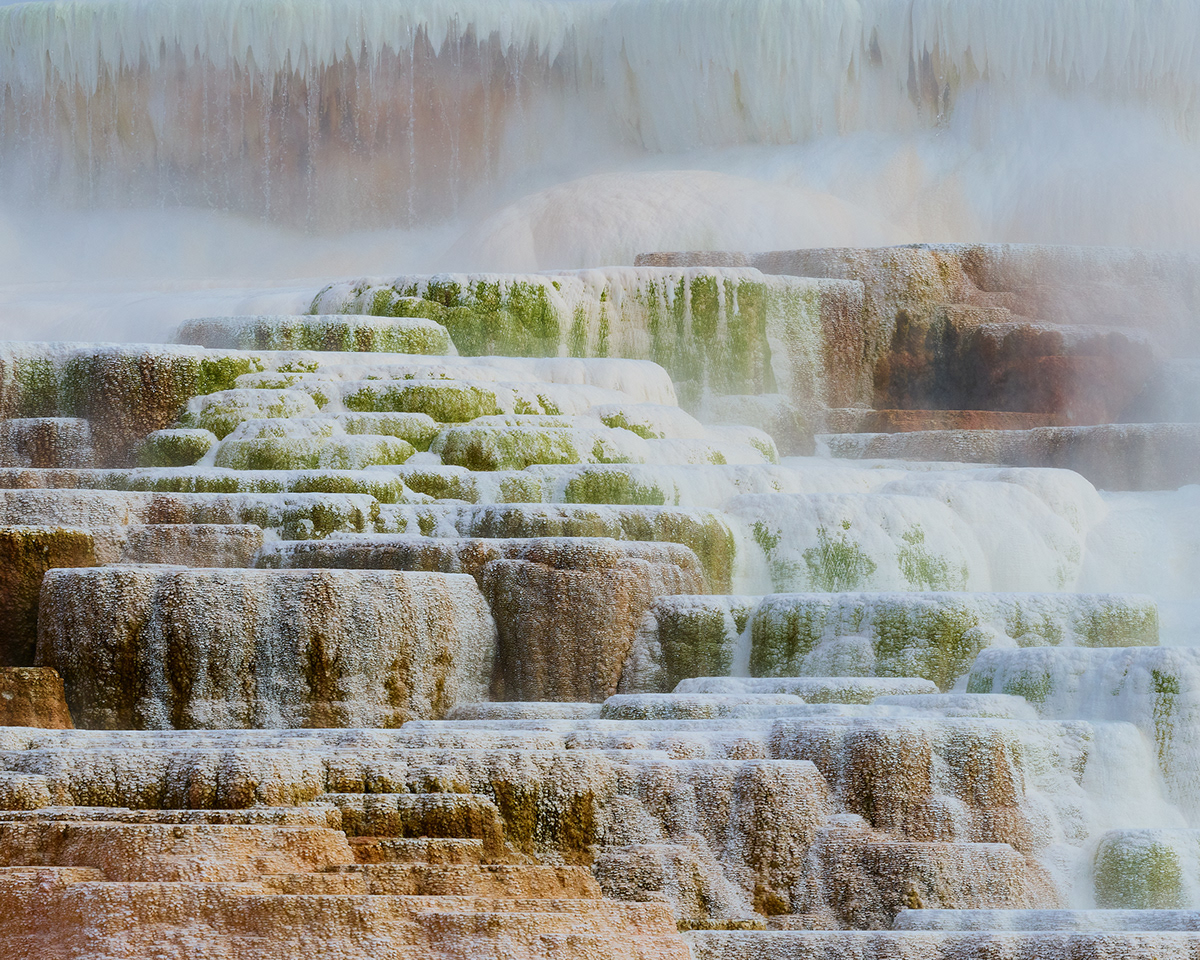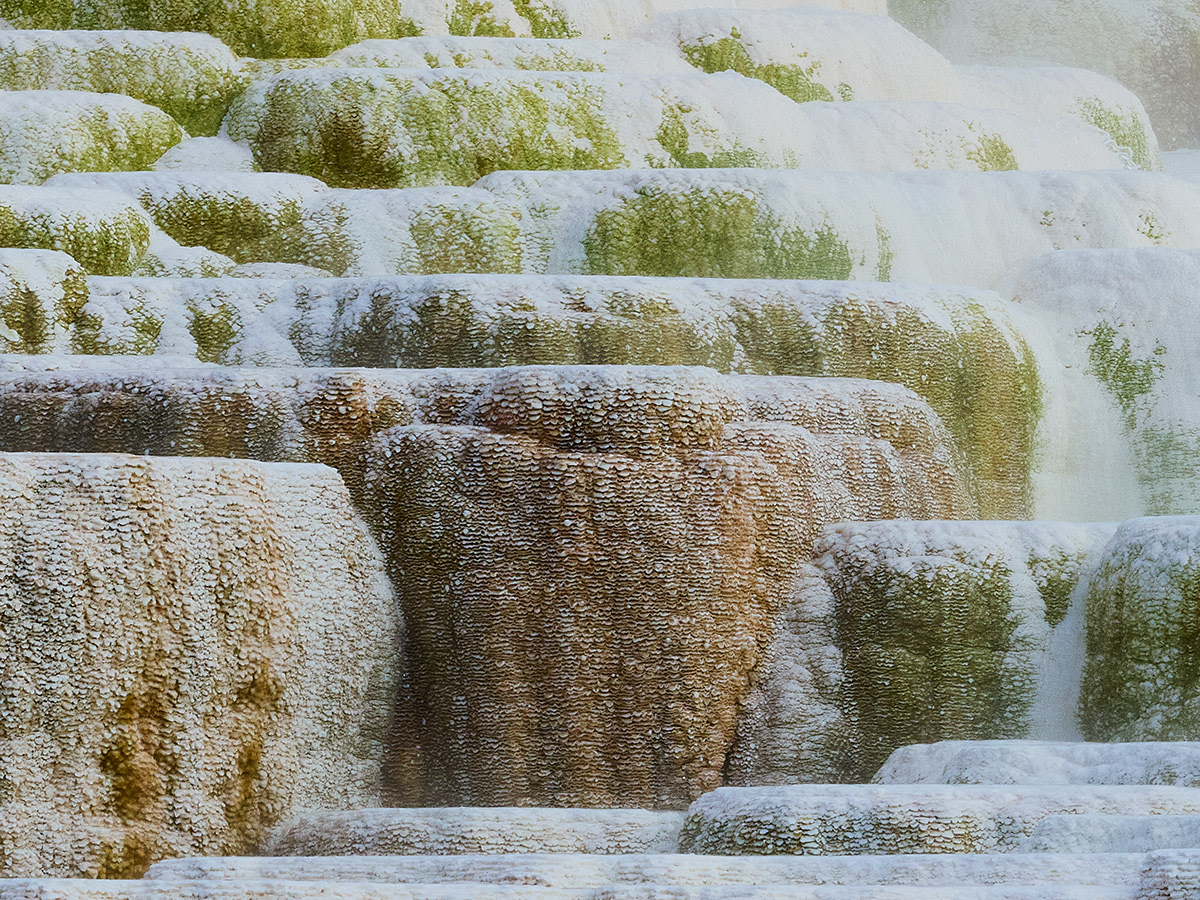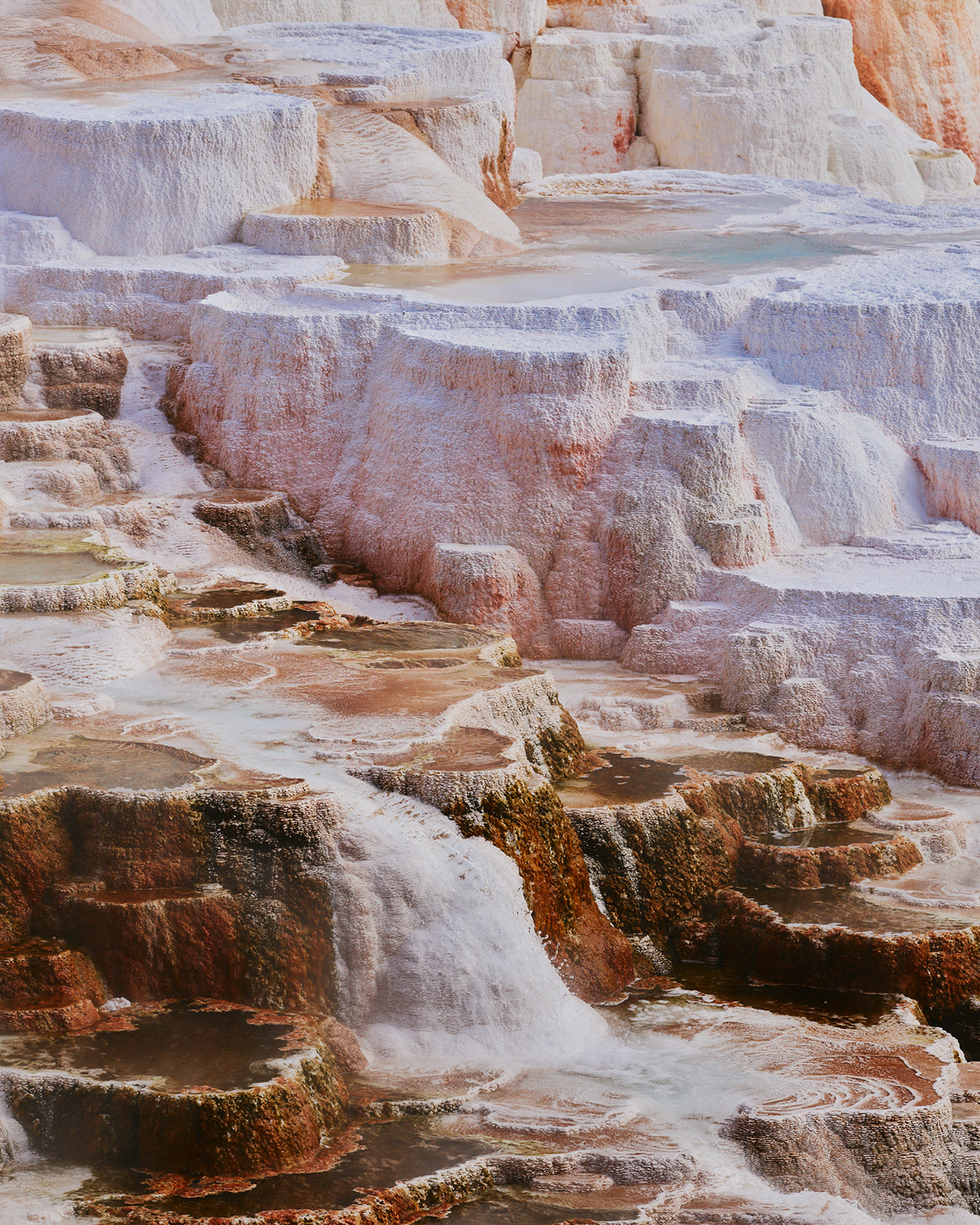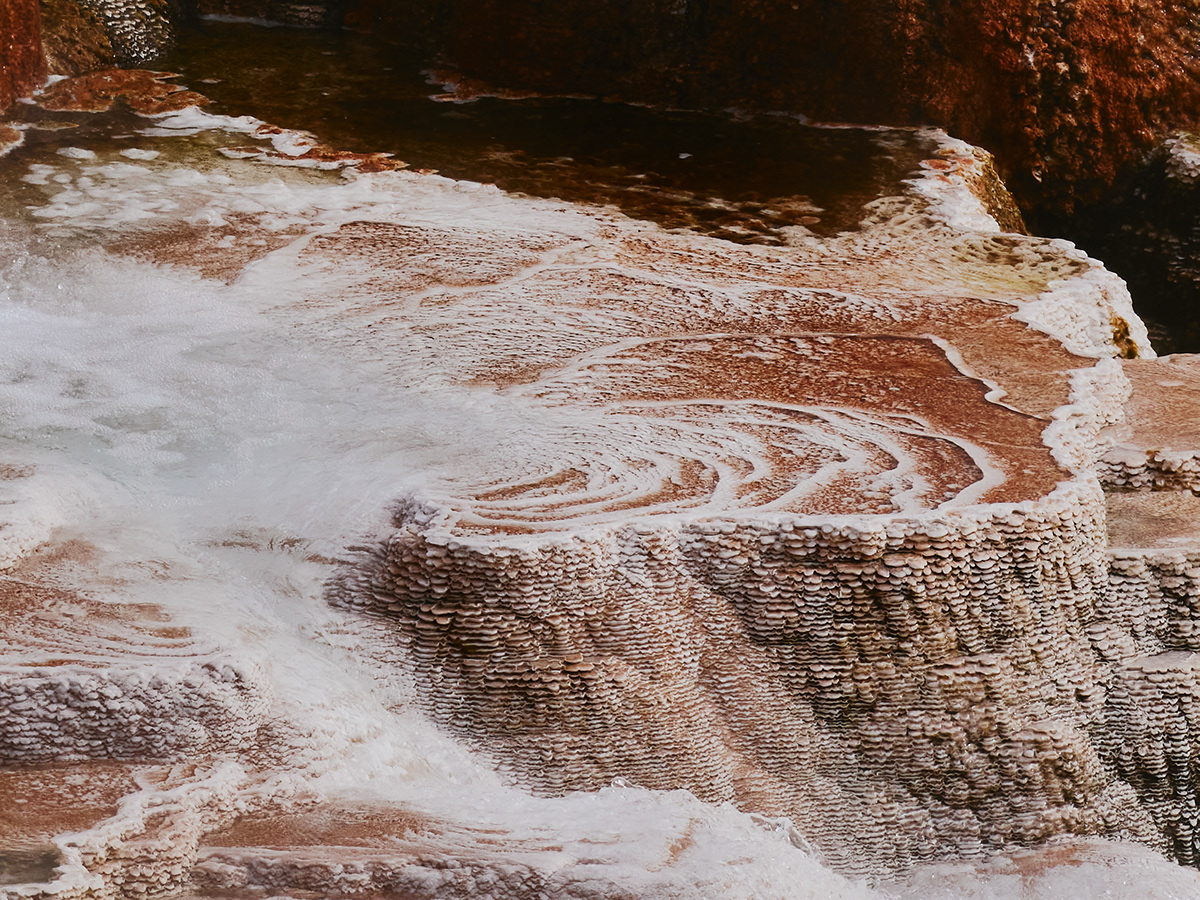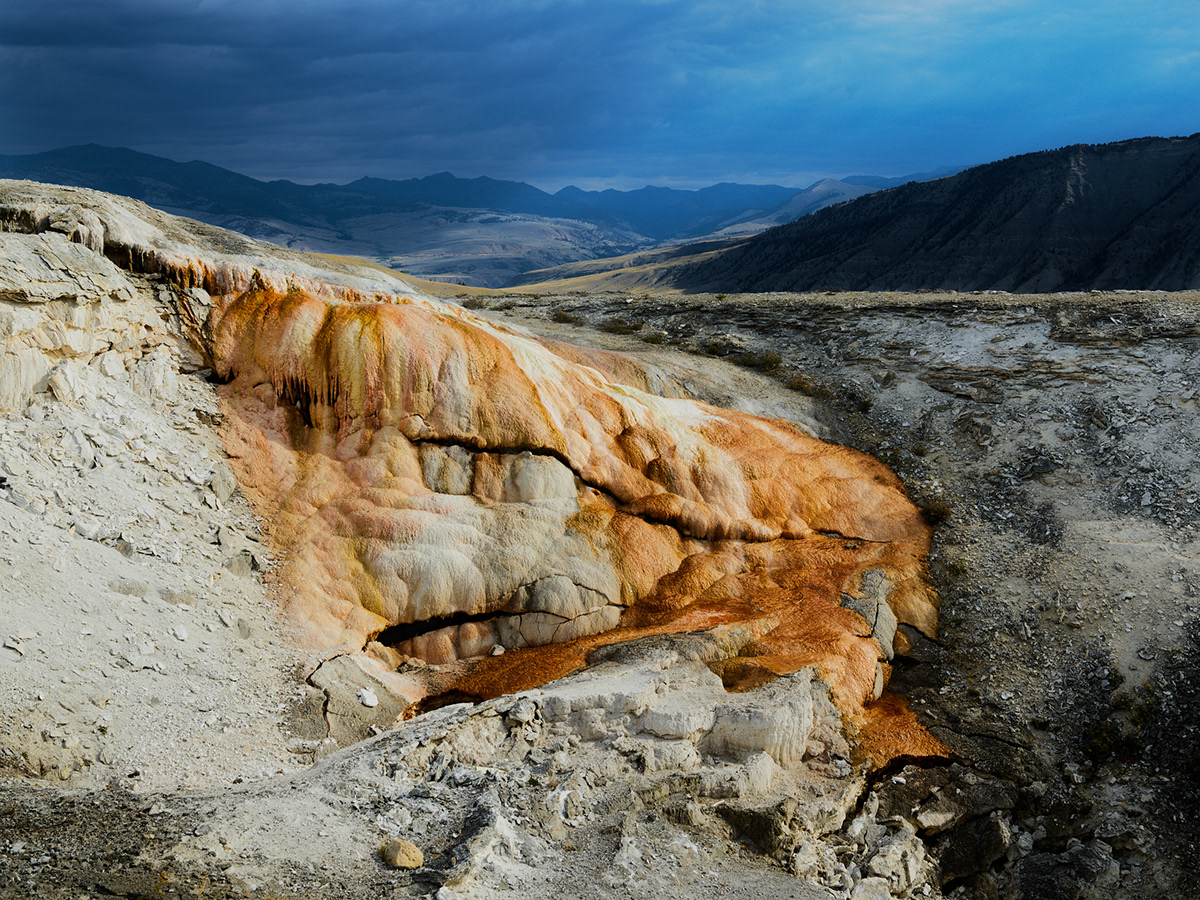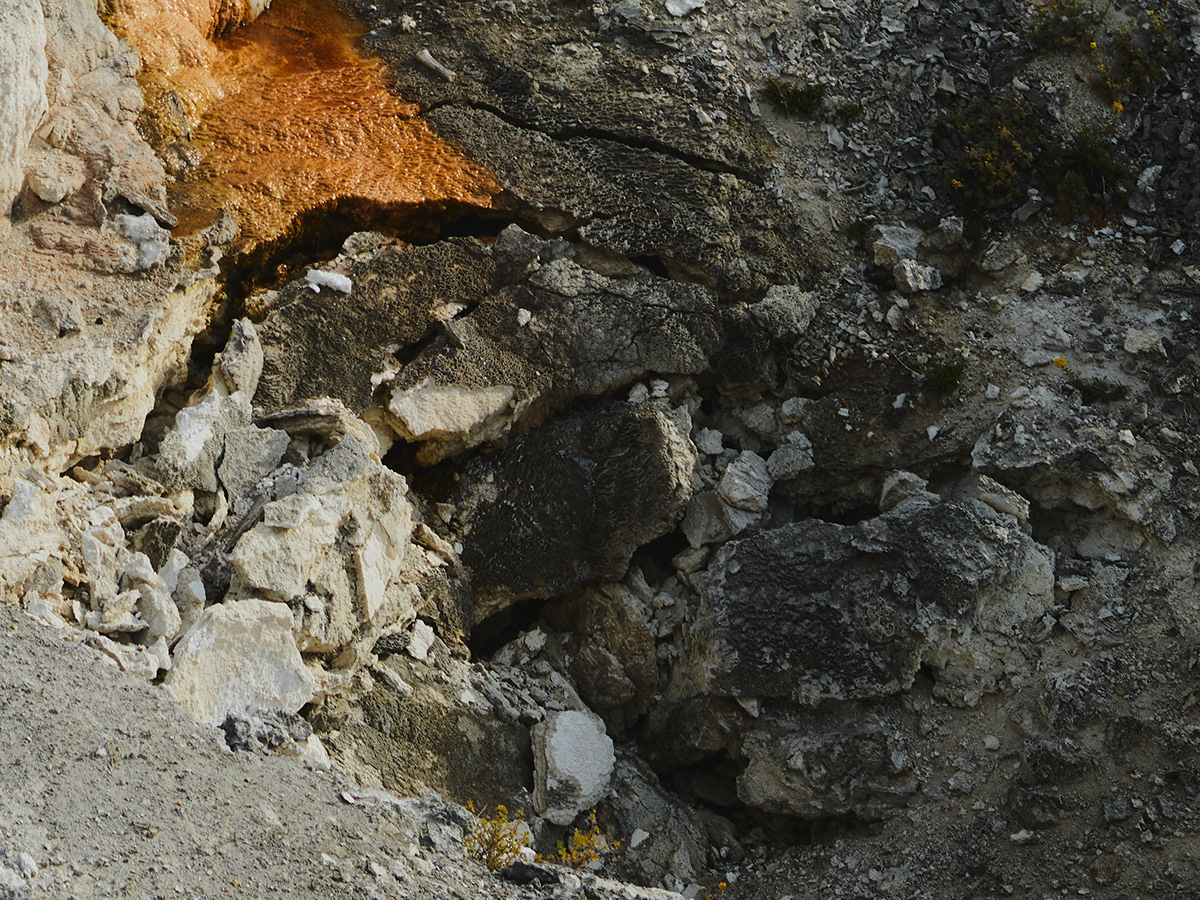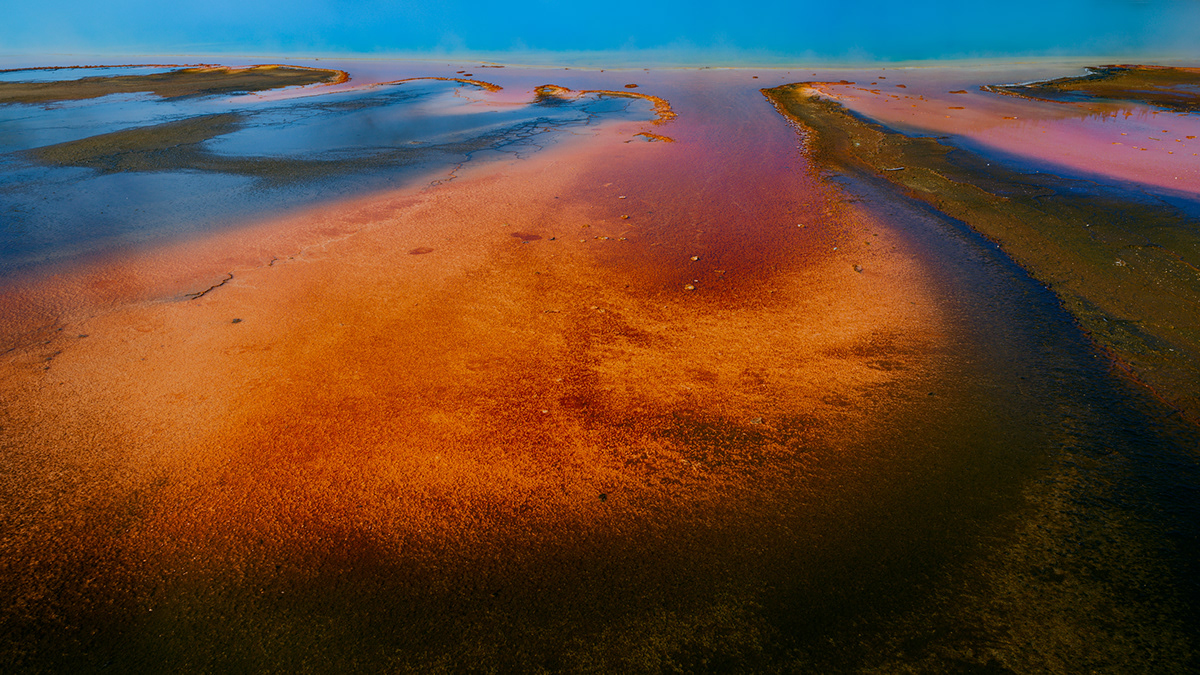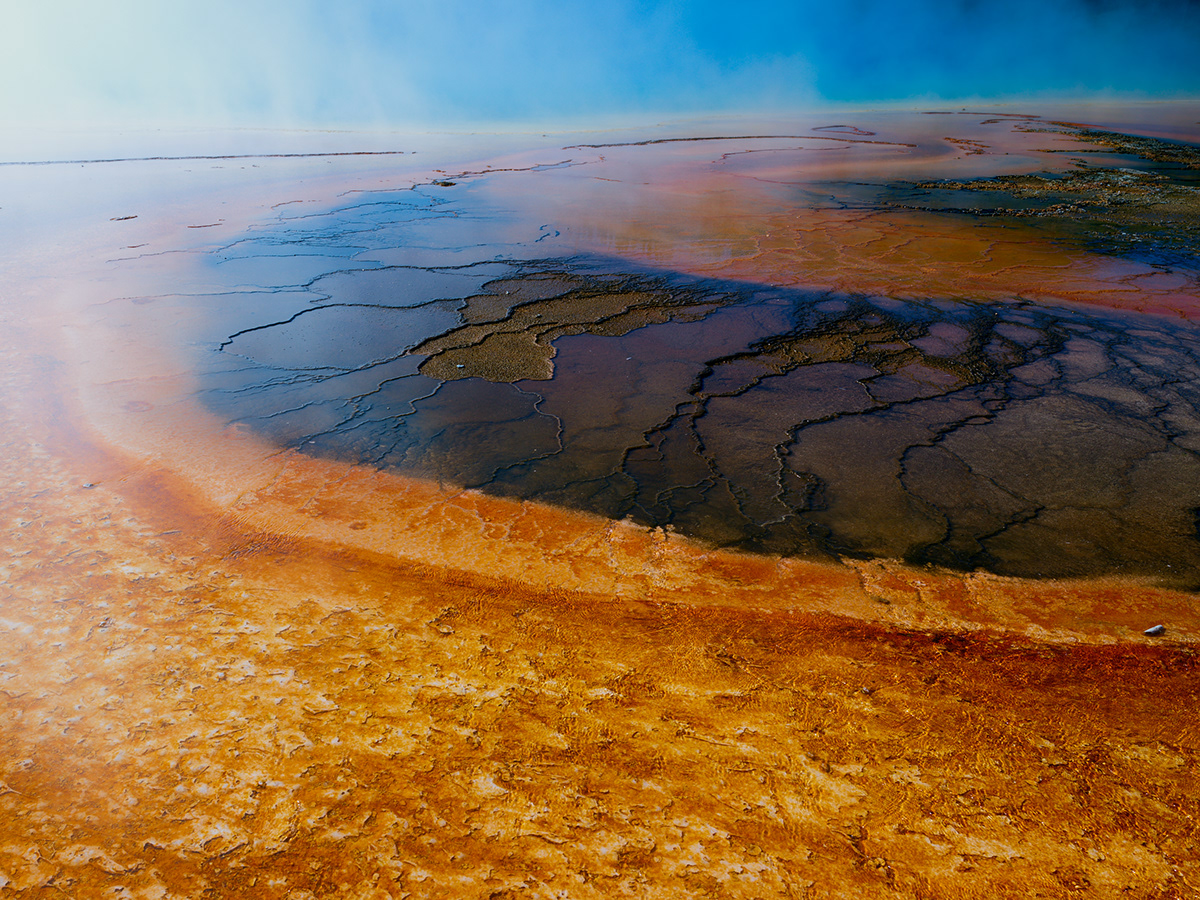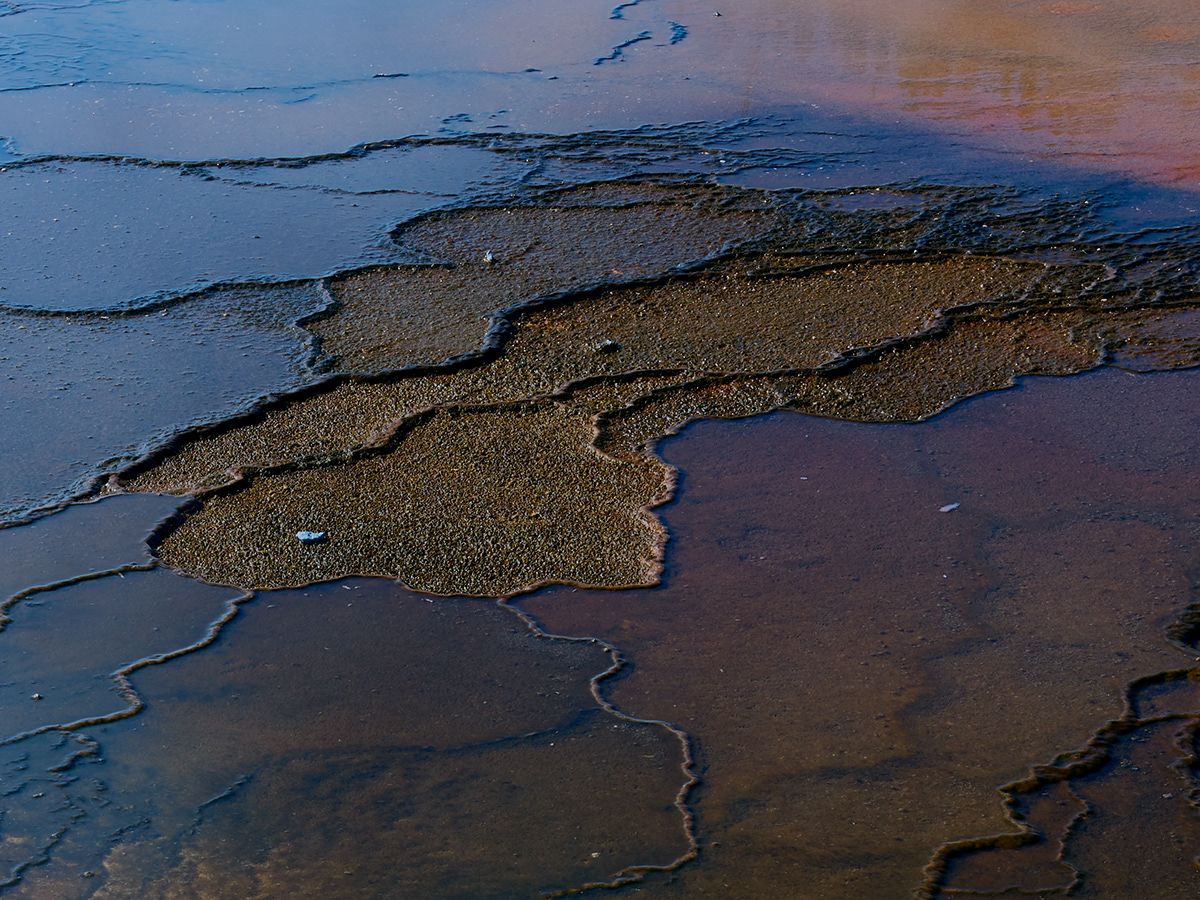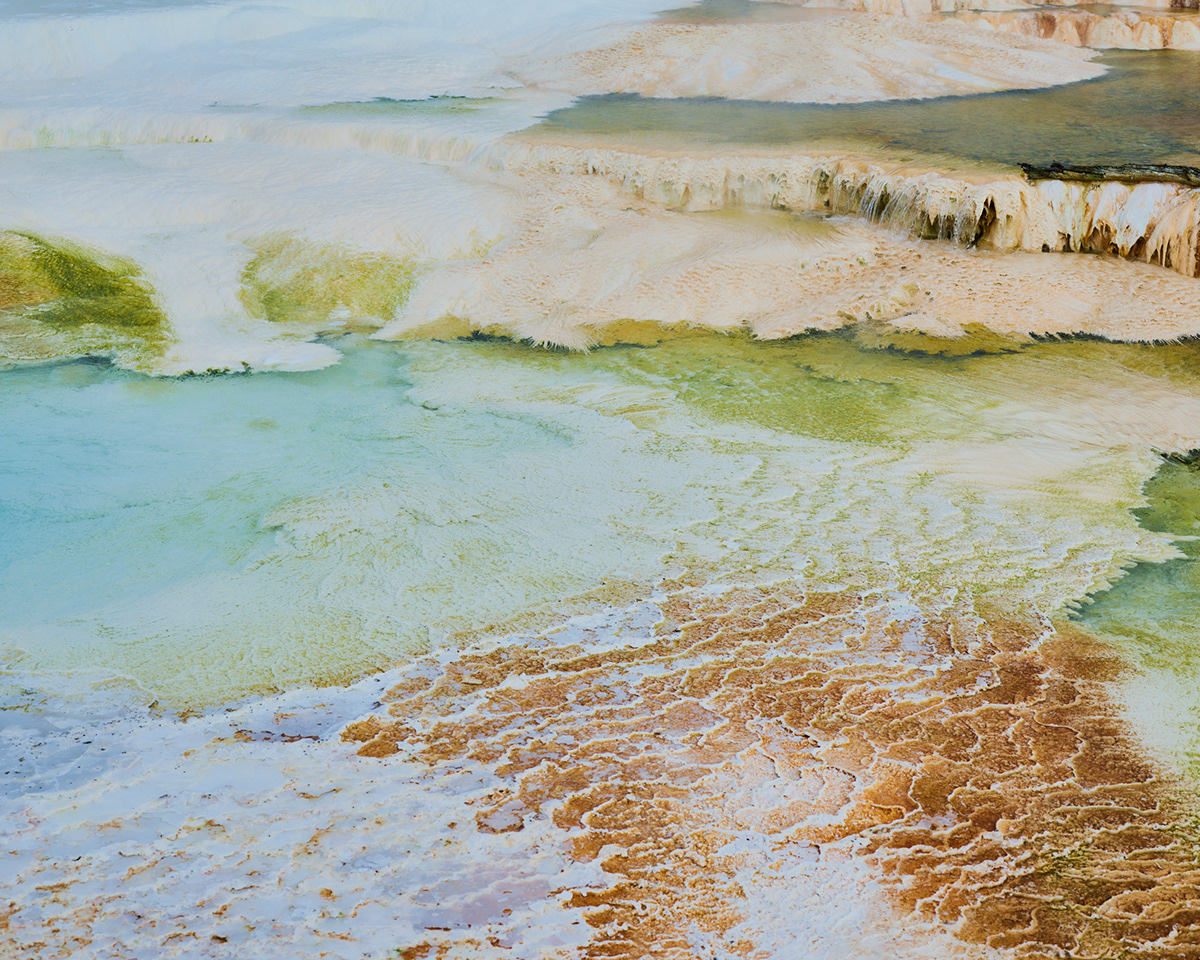
Strange Beauty
Uncommon hues and strange formations dot an otherwise unremarkable landscape. Intense and dynamic forces operate below the surface of the Earth. Water is filtered, heated, compressed, and pushed out of the ground. The super heated water deposits minerals creating strange formations, and cools as it is exposed to the surface. Thermophiles, or bacteria which thrive in heat, make their homes in the water and on these formations. Different types of bacteria multiply and settle across the springs depending on their preferred temperature. Some bacteria found in these types of springs will only flourish in temperatures exceeding 180ºF.
*
Mankind has a surprising number of things in common with cyanobacteria, not least of which is the magnitude of the impact we’ve had on the planet. Over 2 billion years ago, cyanobactera, not unlike the colorful bacteria in these images, forced a global extinction event by producing oxygen on an immense scale for the first time. This drastically changed the climate of the early Earth and directly forced the extinction of many existing species that found this new atmosphere toxic. Though detrimental to some types of life, this new climate made it possible for multicellular life to explode and eventually grow into the familiar forms we know today.
*
The bacteria that paint these rocky formations are informing how scientists look for life outside of Earth, and influence our ability to predict where life can exist. Many scientists believe that life on Earth may have sprung into existence in springs like this billions of years ago, and so are fertile sources for research in astrobiology.
This ongoing series is meant to capture the strange beauty of geothermal springs and the odd ecosystems they help propagate, recognize their significance, and to imagine these places outside the context of Earth.
